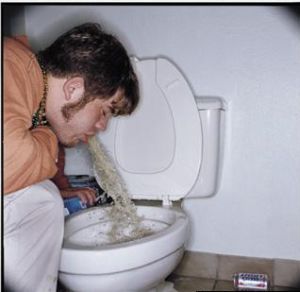Treatment Outcome
Better treatment outcomes are seen in programs that provide a greater range of services and a flexible approach to individualized treatment. Brief interventions by doctors and pharmacotherapy can be effective in some cases. Naltrexone, an opiate antagonist approved by the FDA for treatment of alcoholism in 1994, is effective when used with verbal therapy to treat dependence. This cuts the relapse rates in most studies (O’Malley et al., 1992, 1996; Volpicelli, Alterman, Hayashida, & O’Brien, 1992). Disulfiram has been shown to be effective in patients who are highly motivated and involved in a treatment program. If the patient drinks while taking disulfiram, acetaldehyde builds up in the body and causes flushing, nausea, low blood pressure, and rapid heart rate.
All of this feels uncomfortable and may cause the alcoholic to drink less in an effort to avoid the pain. Other pharmacotherapies for the treatment of alcoholism such as acamprosate are in the pipeline and should be FDA-approved soon. In Europe, studies have shown that acamprosate can almost double the abstinence rate among recovering alcoholics. Scientists still do not know exactly what acamprosate does, but it appears to mediate the effects of N-methyl-D-aspertate, which mediates another important brain chemical called glutamate (Sass, Soyka, Mann, & Zieglgansberger, 1996).
Medications such as disulfiram or naltrexone can provide an invaluable and life-saving opportunity to alter behavior patterns. Some patients feel bad about taking their medication because they feel as though they are relying on a crutch. Without your support, they might feel that they can’t take credit for their recovery as long as they are on a medication.
Medication should never be used as a substitute for working a program of recovery. Drugs rarely keep a patient clean and sober. The patient needs to understand that you are going to use everything possible to help him or her stay clean. Medications should be carefully monitored through refill requests, and long-term prescriptions should not be given to allow the physician the opportunity to maintain contact and monitoring.
Remember that addiction is a chronic, relapsing brain disease. Recent studies show that after six months, treatment is successful for 40% to 70% of patients. Thirty percent to 50% of patients remain abstinent for one year after completing treatment. These improvements are comparable to those found in treating people for other chronic, relapsing health conditions, such as asthma, diabetes, and hypertension (Stein, 2001).
 Mental health workers and most educated professionals who are a part of the medical community are taught that you should not discuss your spiritual beliefs with the patient. It is not ethical. But in the best program that works for addiction, this is what we do. You don’t have to do this and you can help the patient get clean and sober many ways, but 90% of patients who work the program I teach you in this book stay clean and sober (Hoffmann, 1991, 1994; Hoffmann & Harrison, 1987).
Mental health workers and most educated professionals who are a part of the medical community are taught that you should not discuss your spiritual beliefs with the patient. It is not ethical. But in the best program that works for addiction, this is what we do. You don’t have to do this and you can help the patient get clean and sober many ways, but 90% of patients who work the program I teach you in this book stay clean and sober (Hoffmann, 1991, 1994; Hoffmann & Harrison, 1987).
###
Robert R. Perkinson, PHD
Helping Your Clients Find the Road to Recovery
Alcoholism - Treatment. I. Title.
RC565.P375 - 2004
616.86’10651- dc22